One Slippery Sock & Other Silly Tools for your Parenting Toolbox
They say laughter is the best medicine. While that may be true, there are other important uses for the tincture of silliness that should not be overlooked! Here are a few:
tincture of silliness that should not be overlooked! Here are a few:
- Your two-year-old digs his heels in at bedtime in an Oscar-worthy imitation of a mule. Give the ‘one slippery sock’ routine a try. Put socks on your feet and, when you call him to head off with you to begin your bedtime routine, start slipping and sliding on one side. Just little slips and slides will do the trick, along with a good helping of parental confusion over the possible reasons you’re having so much trouble walking. Little people love slap-stick, and you can bet your dawdler will hurry along to get in on the fun!
- Your eighteen-month-old suddenly stops enjoying the novelty of tooth-brushing and locks her little jaws tighter than a bulldog latched onto a bone. Try ‘tickling the ivories.’ Brush your own teeth first, giggling and dancing around the bathroom the whole time like you’re tickled at being tickled (while your little one watches, of course). Then release the gentle tooth-tickler on your most likely already giggling baby and say, “Tickle teeth! Tickle teeth!” while brushing those pearly whites.
- Your three-year-old eschews the use of shoes no matter how many choices of style and color you offer. Try the ‘superhero’ approach. Instead of the tired, old, “Time to get your shoes on,” routine…say, “The terrible-toe-tickling super villain is on the loose! We need some superhero armor on those feet, quick!” Be prepared to take the time to discuss the relative protective qualities of the available ‘armor’, but then get those toes to safety!
- Your six-year-old chatterbox could make a monk revoke his vow of silence just to say “Shhhhhh!!!” Try the ‘seven super silly seals sent slippery slippers to their sisters’ treatment. Give your little chatterbox a tongue-tying-twisty-treat and the promise of your full attention for five minutes when she thinks she’s ready to say it ten times fast. Then enjoy your two minutes of quiet until she returns!
- Your nine- and seven-year-olds are at each other like cats with their tails tied together. How about a ‘bag on your head while you listen to the ‘he said/she said’? When you head in to break up the gazillionth argument of the day, slip a paper bag with a great big goofy smile and a couple of googly eyes drawn on it over your head first. It may not solve everything, but it’ll be super hard for them to stay mad at each other, and a little levity might just diffuse the tension!
- Your high-schooler is one stressed-out teen with SATs looming, homework mounting, friend drama annoying, and hormones swirling. It’s time for a ‘pajama-night-out-orama’! Wait until the house settles, everyone’s in bed for the night, and all is quiet…then leave your spouse in charge of the house while you sneak your teen out the back door with you for a one-on-one run through Dunkin’ Donuts and sit in the car in your driveway stuffing your faces and letting her unstuff all the angst that’s been building up inside of her. Might not be good for your arteries, but it’ll do her heart a world of good!
Silly works! Don’t handicap your parenting by forgetting one of the most powerful tools in your parenting toolbox.
Related posts:
Babes and Boundaries~A Gentle Parenting Perspective
Parenting in Public: Toddler Time
 Award-winnning author, L.R.Knost, is the founder and director of the children's rights advocacy and family consulting group, Little Hearts/Gentle Parenting Resources, and Editor-in-Chief of Holistic Parenting Magazine. Books by L.R.Knost include Whispers Through Time: Communication Through the Ages and Stages of Childhood ; Two Thousand Kisses a Day: Gentle Parenting Through the Ages and Stages ; The Gentle Parent: Positive, Practical, Effective Discipline ; and Jesus, the Gentle Parent: Gentle Christian Parenting the first four books in the Little Hearts Handbook gentle parenting series, and children’s picture books Petey’s Listening Ears and the soon-to-be-released Grumpykins series.
Award-winnning author, L.R.Knost, is the founder and director of the children's rights advocacy and family consulting group, Little Hearts/Gentle Parenting Resources, and Editor-in-Chief of Holistic Parenting Magazine. Books by L.R.Knost include Whispers Through Time: Communication Through the Ages and Stages of Childhood ; Two Thousand Kisses a Day: Gentle Parenting Through the Ages and Stages ; The Gentle Parent: Positive, Practical, Effective Discipline ; and Jesus, the Gentle Parent: Gentle Christian Parenting the first four books in the Little Hearts Handbook gentle parenting series, and children’s picture books Petey’s Listening Ears and the soon-to-be-released Grumpykins series.
Babes and Boundaries~A Gentle Parenting Perspective
[Reprinted from Two Thousand Kisses a Day: Gentle Parenting Through the Ages and Stages by L.R.Knost. Whispers Through Time: Communication Through the Ages and Stages of Childhood also now available on Amazon]
 Parenting is soooo tiring and frustrating at times. Sometimes you just want to sit a small child down and say, “Do you know how much easier your life (and mine!) would be if you’d just be REASONABLE?!?” But we know that wouldn’t do any good because the words ‘reasonable’ and ‘toddler/preschooler’ just don’t play well together. The thing to remember is that gentle parenting doesn’t mean parenting without boundaries.
Parenting is soooo tiring and frustrating at times. Sometimes you just want to sit a small child down and say, “Do you know how much easier your life (and mine!) would be if you’d just be REASONABLE?!?” But we know that wouldn’t do any good because the words ‘reasonable’ and ‘toddler/preschooler’ just don’t play well together. The thing to remember is that gentle parenting doesn’t mean parenting without boundaries.
Believe it or not, the foundation for discipline (guiding, leading, teaching…NOT punishment ) begins in the newborn and infancy stages. When parents respond quickly, consistently, and gently to their baby’s cries, the trust relationship that the parent is establishing becomes the cornerstone for later discipline. Boundaries need to be established for a child’s safety and growth into a successful citizen of our world. A child who is secure in the knowledge that he doesn’t have to fight to be heard or to have his needs met is more open and adaptable to limits. And when the ‘limit-setter’ is a person the child trusts, the enforcement of those boundaries becomes a matter of connection and communication instead of conflict and struggle.
So, what might setting and enforcing boundaries using gentle parenting look like in real life? Here are a few examples:
- Your 18 month old has begun hitting you whenever you try the ‘remove and distract’ method of keeping her from sticking things into power outlets. In addition to covering the outlets with safety covers, a gentle parenting approach to hitting at this age would be to gently hold your child’s hand when she tries to hit, look her in the eye, and say quietly and firmly, “Gentle” or “Gentle hands,” while stroking your cheek with her hand. This sets a boundary that hitting is not okay while demonstrating what behavior is acceptable. Don’t expect this to be a one-time deal, though. Little ones learn through consistent and patient repetition.
- Your 2 year old drops to the ground in limp protest every time you try to leave ANYWHERE! First, giving a toddler some warning that a change is about to occur respects their often intense interest in and focus on their own activities. A gentle parenting approach might be to utilize the ‘countdown to leaving’ method to give them a time context (i.e. “Five more minutes! That means you have enough time for five more horsey rides on grandpa’s back!”… “Four more minutes! That means you can have four more jumps into the ballpit!”… “Three more minutes! That means you have enough time to build three more towers and knock them down!”… “Two minutes left! That means you have enough time to go down the slide two more times!”… “One more minute! That means you can look at one more book!”). Remember, children aren’t little robots we can just upload the right program into and expect it to work perfectly every time, so when your little human still impersonates a limp noodle despite your best efforts, quietly acknowledge his distress, “It’s hard to leave when you’re having fun, isn’t it?” and then gently pick him up and move him to the car/stroller, etc.
- Your 3 year old flat out refuses to wear shoes, period. In addition to giving choices, “Do you want to wear the red boots or the blue sneakers today?” and offering her the opportunity to assert her independence, “Would you like to put your shoes on yourself or do you want mommy to help?” sometimes all that is needed is a simple question, “Why don’t you want to wear shoes?” Three year olds are typically becoming articulate enough that, if they aren’t already stressed, they can do a pretty good job of explaining themselves. You might be surprised to hear something like, “Tomowow my boos hut my toes,” which when translated means, “The last time I wore my boots they hurt my feet, and now I think all shoes will hurt me.” Moving on to a more verbal communication stage of your relationship with your child when they’re ready might seem a no-brainer, but parents often get caught up in patterns of parenting from previous stages and it just doesn’t occur to them to simply ask their child what’s wrong. Again, this won’t always work, so when your little bohemian still rejects all things soled, calmly let her know that she will remain in the stroller/sling/cart and not do any walking until she decides she’s ready to put on her shoes.
One other note about parental boundaries is that it’s not just your children who will challenge them! Everyone and their mother (or especially their mother!) will take every ‘misbehavior’ by your child as an opportunity to give you unsolicited and often unwanted advice. Remember, when it comes down to it, it’s you, the parent, who determines what limits to set. Mrs. In-My-Day, Cousin Know-It-All, Mr. My-Way-Is-The-Only-Way, and Neighbor Nose-In-Everyone-Else’s-Business all have their own ideas that make sense to them, and that’s fine, but you are not them! You the unique parent of a unique individual, and you have the sole responsibility to raise that individual as you see fit (with reasonable limits set by your community as to what constitutes abuse, neglect, etc).
Everyone and their mother (or especially their mother!) will take every ‘misbehavior’ by your child as an opportunity to give you unsolicited and often unwanted advice. Remember, when it comes down to it, it’s you, the parent, who determines what limits to set. Mrs. In-My-Day, Cousin Know-It-All, Mr. My-Way-Is-The-Only-Way, and Neighbor Nose-In-Everyone-Else’s-Business all have their own ideas that make sense to them, and that’s fine, but you are not them! You the unique parent of a unique individual, and you have the sole responsibility to raise that individual as you see fit (with reasonable limits set by your community as to what constitutes abuse, neglect, etc).
In practical application, boundaries do reflect the culture and environment in which a child lives. In a small, rural community in Spain, doors may be left open day and night and the neighbors may all be related. Small children might have the freedom to wander in and out of houses, play ball in the middle of the road, and plop down for an afternoon nap on a neighbor’s sofa. In a busy, urban city such as New York, doors may be kept locked, people may never have even met their neighbors, and playing in the street might be tantamount to a child endangerment charge.
The point is that boundaries aren’t a one-size-fits-all list that you can buy from Barnes & Noble, put on the fridge, and slap a sticker on every time a child complies. Boundaries are personal limits determined by the parent’s values and priorities and culture as well as reflecting the age and maturity of their child and the unique attributes of their community.
It may ‘take a village’ to raise a child, but remember, it’s you, the parent, who’s the leader of your tribe!
Related posts:
Testing the Boundaries~What’s A Parent To Do?
Toddlers, Tantrums, and Time-Ins, Oh My!
The Taming of the Tantrum: A Toddler’s Perspective
 Award-winnning author, L.R.Knost, is the founder and director of the children's rights advocacy and family consulting group, Little Hearts/Gentle Parenting Resources, and Editor-in-Chief of Holistic Parenting Magazine. Books by L.R.Knost include Whispers Through Time: Communication Through the Ages and Stages of Childhood ; Two Thousand Kisses a Day: Gentle Parenting Through the Ages and Stages ; The Gentle Parent: Positive, Practical, Effective Discipline ; and Jesus, the Gentle Parent: Gentle Christian Parenting the first four books in the Little Hearts Handbook gentle parenting series, and children’s picture books Petey’s Listening Ears and the soon-to-be-released Grumpykins series.
Award-winnning author, L.R.Knost, is the founder and director of the children's rights advocacy and family consulting group, Little Hearts/Gentle Parenting Resources, and Editor-in-Chief of Holistic Parenting Magazine. Books by L.R.Knost include Whispers Through Time: Communication Through the Ages and Stages of Childhood ; Two Thousand Kisses a Day: Gentle Parenting Through the Ages and Stages ; The Gentle Parent: Positive, Practical, Effective Discipline ; and Jesus, the Gentle Parent: Gentle Christian Parenting the first four books in the Little Hearts Handbook gentle parenting series, and children’s picture books Petey’s Listening Ears and the soon-to-be-released Grumpykins series.
If You Give A Toddler A Book…
[By L.R.Knost, author of Two Thousand Kisses a Day: Gentle Parenting Through the Ages and Stages, Whispers Through Time: Communication Through the Ages and Stages of Childhood, and The Gentle Parent: Positive, Practical, Effective Discipline available on Amazon and through other major retailers.]
~~~~~~~~~~~~~~~~~~~~~
He’ll climb into your lap
While he’s in your lap
He might lay his head on your chest
When he lays his head on your chest
He’ll hear your heartbeat
When he hears your heartbeat
He’ll probably ask if you can hear his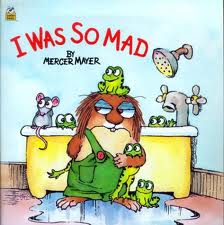
When you lean down to listen
He might kiss your nose
When he kisses your nose
You could tickle his tummy
When you tickle his tummy
He might giggle and wiggle
When he giggles and wiggles
When you hug him tight
He’ll smile like the sun
When he smiles like the sun
You’ll smile right back
When you smile right back
He might tell you he loves you
When he tells you he loves you
You’ll whisper it back
He’ll probably snuggle close
When he snuggles close
He might ask you to read to him
When he asks you to read to him
You’ll read him the book
When you read him the book
He might just learn to love…
To learn!
~L.R.Knost
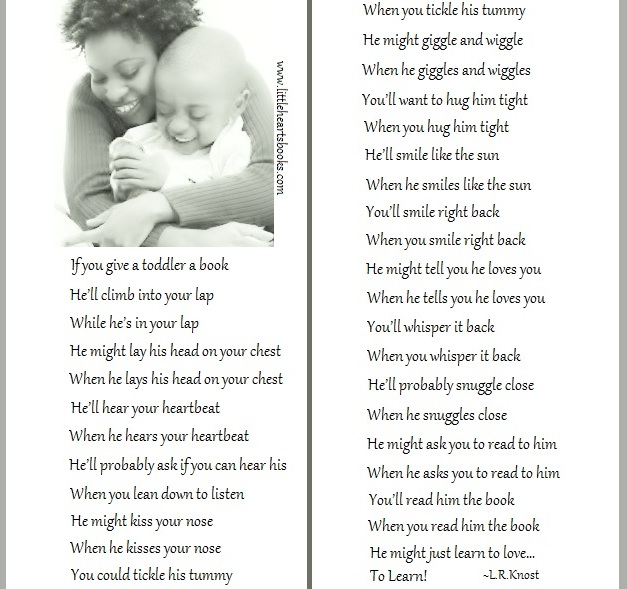 Related posts:
Related posts:
25 Must-Have Books for Baby Bookworms
25 Must-Have Books for Toddler Bookworms
Alphabet Fun~Imagination From A to Z!
Live to Play~Play to Learn~Learn to Live!
Making Money Matters Make Cents
Playground Confessions~Look Who’s Talking!
One Slippery Sock & Other Silly Tools for your Parenting Toolbox!
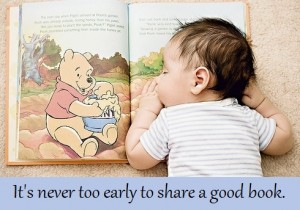
 Award-winnning author, L.R.Knost, is the founder and director of the children's rights advocacy and family consulting group, Little Hearts/Gentle Parenting Resources, and Editor-in-Chief of Holistic Parenting Magazine. Books by L.R.Knost include Whispers Through Time: Communication Through the Ages and Stages of Childhood ; Two Thousand Kisses a Day: Gentle Parenting Through the Ages and Stages ; The Gentle Parent: Positive, Practical, Effective Discipline ; and Jesus, the Gentle Parent: Gentle Christian Parenting the first four books in the Little Hearts Handbook gentle parenting series, and children’s picture books Petey’s Listening Ears and the soon-to-be-released Grumpykins series.
Award-winnning author, L.R.Knost, is the founder and director of the children's rights advocacy and family consulting group, Little Hearts/Gentle Parenting Resources, and Editor-in-Chief of Holistic Parenting Magazine. Books by L.R.Knost include Whispers Through Time: Communication Through the Ages and Stages of Childhood ; Two Thousand Kisses a Day: Gentle Parenting Through the Ages and Stages ; The Gentle Parent: Positive, Practical, Effective Discipline ; and Jesus, the Gentle Parent: Gentle Christian Parenting the first four books in the Little Hearts Handbook gentle parenting series, and children’s picture books Petey’s Listening Ears and the soon-to-be-released Grumpykins series.
Testing the Boundaries~What’s A Parent To Do?
 [Portions reprinted from The Gentle Parent: Positive, Practical, Effective Discipline by L.R.Knost. Two Thousand Kisses a Day: Gentle Parenting Through the Ages and Stages and Whispers Through Time: Communication Through the Ages and Stages of Childhood now available on Amazon and through other major retailers.]
[Portions reprinted from The Gentle Parent: Positive, Practical, Effective Discipline by L.R.Knost. Two Thousand Kisses a Day: Gentle Parenting Through the Ages and Stages and Whispers Through Time: Communication Through the Ages and Stages of Childhood now available on Amazon and through other major retailers.]
Challenging behavior in our children can be really…well, challenging! How do you ‘handle’ a child who suddenly refuses to wear shoes or sit in her carseat/seatbelt or eat, period? Here are some tips to help you regain that snuggly, loving relationship you used to enjoy before your baby became a…gulp…PERSON!
1.) Remove the word ‘handle’ from your parenting vocabulary entirely. Your child isn’t a lion to be tamed or a dog to be trained! He’s a person, an individual with thoughts, interests, concerns, wants, and needs that are totally separate from yours. Respecting him as a separate individual not only models the value we need to place on others in our homes and communities, but also sets the stage for a mutually respectful relationship in his teen years and beyond.
2.) Slow down! Often simplifying our lives is the key to simplifying our parenting issues. Rushing a child from one activity to the next doesn’t expand her horizons; it stunts her creativity and inherent zest for life, which are the building blocks of a life-long love of learning. When she digs her heels in, pay attention! She’s trying to communicate a very deep need for time and space to learn about the world, to play and grow, and to just ‘be.’
3.) Small children have very little control over their lives, and the more powerless they feel, the more likely they are to make eating, getting dressed, going to the potty, etc. a battle of wills. Giving choices, engaging your child in making plans, and being flexible and responsive on a daily basis are good ‘proactive’ parenting, but little people are notorious for their awkward timing in deciding to suddenly assert their independence! Be prepared for those challenging moments by deciding ahead of time how you will respond. (See below for some ideas!)
4.) Listen, listen, listen! The first question parents ask me is almost always, “How do I get my child to listen?” And my first response is usually, “How well do you listen?” As Ralph Waldo Emerson so aptly put it, “What you do speaks so loud that I cannot hear what you say.” In other words, our children learn best by imitation. If every time our little ones ask for our attention we say, “Just a minute,” then we cannot expect instant attention from them. If when they speak to us our eyes constantly stray back to our computers and iPhones, we should not be surprised if they have a hard time looking at us when we ask them to. Listening is a two-way street that starts and ends with us, the adults.
5.) Boundaries are our friends! Many people believe that Gentle Parenting is a form of un-parenting, but nothing could be further from the truth. Gentle Parenting is involved parenting~interactive, engaged, active parenting. It takes focused attention, planning, participation, research, and so much more to be an empathetic, responsive parent who is in tune with their child’s needs and who is prepared to make whatever sacrifices are necessary to meet those needs. That said, in any home, like in any civilized society, boundaries are necessary for everyone’s safety and comfort. It is in the choosing and maintaining of those boundaries that Gentle Parenting distinguishes itself. In a gently parented home, boundaries are focused on guiding rather than controlling children and are maintained through empathetic and creative resolutions rather than harsh punitive consequences. (See below for some ideas!)
6.) Watch your attitude! Do you have angry eyes? A sharp tone? Do you issue commands and demand compliance? Do you sigh and roll your eyes when frustrated with your little one? All of these things contribute to creating resistance in children. Really, who wants to cooperate with someone who is demanding, impatient, sarcastic, angry, etc? Does feeling like a burden or a failure ever motivate anyone? Is a desire to please rooted in correction or connection? Think about how you like to be treated by authority figures (supervisors, law enforcement, etc.) and then treat your children the way you want to be treated! This not only reduces challenging behavior, but also models The Golden Rule~Do to others as you want them to do to you…an excellent life lesson!
Here are some ideas for your Gentle Parenting toolbox:
- Little one refusing to put on shoes before leaving the house? First, ask him why he doesn’t want to wear them. A toddler most likely won’t be able to/want to explain, but you’re modeling courtesy and opening up a dialogue, both good connection points. A three-year-old, though, might just surprise you with a very logical, in their own mind at least, response! Second, don’t react; just scoop the shoes up, and take them with you. If the refusal to wear shoes continues at the park/in the library/at the doctor’s office, etc. calmly tell him he can sit in your lap or in the stroller and hang out with you until he’s ready to wear his shoes.
- If a tantrum results, remember to stay calm (deep breathing, counting silently, and saying a quick prayer for guidance are all helpful!) and remain present. Some children respond well to a parent quietly talking, offering words to express what the child may be experiencing (i.e. “It’s frustrating when we have to do things we don’t like. I can see that you’re angry, and that’s okay. Let’s just sit here together for a while.”), while other children become more upset when a parent attempts to interact with them during a tantrum and are comforted simply by your quiet presence, a gentle back rub, or playing with a Calm-Me-Jar . Getting to know your child is an important part of Gentle Parenting and will help you to ‘read’ these situations so you can be responsive to their unique needs.
- A place for Time-Outs. Typically, I advise parents to use Time-Ins instead of Time-Outs in order to connect-to-correct, but there is one area that I advise the use of Time-Outs…the ‘Time-Out Toy Box!’ When a toy is misused (i.e. thrown, used to
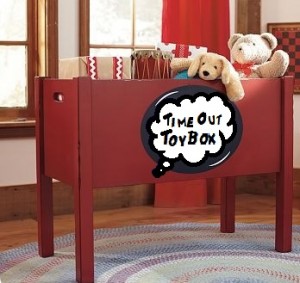 hit, drawn on, fought over, etc) and a gentle redirection has been given, the next step for the toy is to be put in the ‘Time-Out Toy Box.’ Little ones generally find the concept of a toy being put in Time-Out rather humorous and go along with the removal without a fuss (the toy can be returned after an exaggeratedly stern warning to the toy letting it know what is expected of it and that it must listen to ‘the boss’ ~the child, lol. They love that!), but remember to communicate, listen, and be flexible. If the removal of a toy brings about a strong negative response, it may be that the inappropriate behavior was more than just over-exuberance, in which case a Time-In might be needed. Again, being in tune with your child will help you to ‘read’ the situation and respond appropriately.
hit, drawn on, fought over, etc) and a gentle redirection has been given, the next step for the toy is to be put in the ‘Time-Out Toy Box.’ Little ones generally find the concept of a toy being put in Time-Out rather humorous and go along with the removal without a fuss (the toy can be returned after an exaggeratedly stern warning to the toy letting it know what is expected of it and that it must listen to ‘the boss’ ~the child, lol. They love that!), but remember to communicate, listen, and be flexible. If the removal of a toy brings about a strong negative response, it may be that the inappropriate behavior was more than just over-exuberance, in which case a Time-In might be needed. Again, being in tune with your child will help you to ‘read’ the situation and respond appropriately.
- The most challenging, independent children tend to be the ones who need the most intentional parental reconnection. Strong will=Strong need! It is often the strongest-willed children who identify most closely with their parents, oddly enough. While there is no denying how difficult it can be to raise a strong-willed child, seeing the purpose behind the behavior can make the journey much more manageable. Try to view their seemingly constant testing as them doing ‘research’ on you, seeing where your strengths and weaknesses are, and discovering all the ins and outs of being you. Also, taking the time to explain why you make the decisions you do, why you said this, why you didn’t say that, answering the endless questions patiently and openly, can alleviate some of the challenging behavior by offering them insights into who you are without them having to ‘dig’ it out of you!
Related posts:
Practical, Gentle, Effective Discipline
The Taming of the Tantrum: A Toddler’s Perspective
When Children Hit~10 Tips for Parents
Easy Peasy DIY Parenting Tools
To a Toddler Sharing is a 4 Letter Word~MINE!
Tots to Teens~Communication through the Ages and Stages
Parenting in Public: Toddler Time
 Award-winnning author, L.R.Knost, is the founder and director of the children's rights advocacy and family consulting group, Little Hearts/Gentle Parenting Resources, and Editor-in-Chief of Holistic Parenting Magazine. Books by L.R.Knost include Whispers Through Time: Communication Through the Ages and Stages of Childhood ; Two Thousand Kisses a Day: Gentle Parenting Through the Ages and Stages ; The Gentle Parent: Positive, Practical, Effective Discipline ; and Jesus, the Gentle Parent: Gentle Christian Parenting the first four books in the Little Hearts Handbook gentle parenting series, and children’s picture books Petey’s Listening Ears and the soon-to-be-released Grumpykins series.
Award-winnning author, L.R.Knost, is the founder and director of the children's rights advocacy and family consulting group, Little Hearts/Gentle Parenting Resources, and Editor-in-Chief of Holistic Parenting Magazine. Books by L.R.Knost include Whispers Through Time: Communication Through the Ages and Stages of Childhood ; Two Thousand Kisses a Day: Gentle Parenting Through the Ages and Stages ; The Gentle Parent: Positive, Practical, Effective Discipline ; and Jesus, the Gentle Parent: Gentle Christian Parenting the first four books in the Little Hearts Handbook gentle parenting series, and children’s picture books Petey’s Listening Ears and the soon-to-be-released Grumpykins series.
Jesus, The Gentle Parent
[Excerpt reprinted from Jesus, the Gentle Parent: Gentle Christian Parenting by L.R.Knost. Two Thousand Kisses a Day: Gentle Parenting Through the Ages and Stages; Whispers Through Time: Communication Through the Ages and Stages of Childhood; and The Gentle Parent: Positive, Practical, Effective Discipline by L.R.Knost also available on Amazon and through other major retailers.]
~~~~~~~~~~~~~~~~~~~~~
Jesus, the Gentle Parent
“…a great and powerful wind tore the mountains apart and shattered the rocks before the Lord,
but the Lord was not in the wind. After the wind there was an earthquake,
but the Lord was not in the earthquake.
After the earthquake came a fire,
but the Lord was not in the fire.
And after the fire came
a gentle whisper…”
1 Kings 19:11-12
God has gone to great lengths, superhuman lengths even, to reach out to his wandering children and call them home, back into the safe shelter of his arms, into the warm welcome of his presence, into the tender delight of his heart.
Throughout the Old Testament, he spoke through prophets, dreams, angels, and even a bush! He revealed his character in his ‘commandments’ (in the original Hebrew text ‘tsawah’ which literally means ‘directions’ or ‘guides’) and in the names he called himself and in his interactions with that lovely, stubborn, chosen nation, Israel.
And, finally, in the New Testament, he just stuck his feet right in the dirt and somehow stuffed his infinite Being  into the skin of a human.
into the skin of a human.
God with us.
GOD. With. Us!
Why in Heaven’s name would he do that? Well, that’s been the subject of dusty tomes and esoteric debates for centuries, but in truth the answer is very simple: God is a father, a daddy who wants to connect with and build a relationship with his children.
In the Old Testament God revealed himself as a father who is Creator, Provider, and Protector. He showed himself to be an involved father, interested in every detail of his children’s lives, from what they ate to how and where and when they worshiped him. And he revealed his purity, his incomprehensible holiness that kept his beloved children hopelessly separated from him and helpless to change that fact. All the rules for cleansing, all the rituals, and all the formulas, only served to highlight the pitiful fallen state of God’s beloved children.
Then, in the New Testament, God stepped in. He stepped out of Heaven, and he stepped into the muck and mire of life among his precious children.
And that ritualistic, external, temporal cleansing? It became relational, internal, and eternal.
Stones once thrown in righteous judgment were laid down in humble mercy. Punishment was replaced with grace as Righteousness Himself stood between sinful man and his dire fate.
And so we have Jesus, God Himself with us in the flesh, God’s heart in a very literal sense laid bare for all the world to see, the perfect Parent to model ourselves after.
We have the Father…not a father, but THE Father…to look to for guidance about how to parent our children.
So, let’s get practical. What does God’s parenting look like, and how can we model ourselves after him?
Well, Jesus raised twelve children, so let’s take a look at how he did it!
Twelve of God’s children, all with different personalities, backgrounds, and talents, became Jesus’ disciples. The word disciple is the root word in discipline, so in a completely literal sense to discipline our children means to disciple them.
So, what characteristics defined Jesus’ discipleship? How did he treat his disciples? Was he harsh? Did he yell? Did he punish them? Clearly, he had the authority to! But since he came to free us from punishment, it really wouldn’t make sense for him to start meting it out, would it?
Was he distant, unresponsive to their needs? Did he make demands, insist on instant obedience, and toss around kingly commands?
No, no, no, and no! Jesus treated his disciples gently, tenderly. He listened. He responded to their needs, answered their questions, spoke their language. Jesus encouraged and guided and taught his disciples.
He drew them close to himself, lived with them, ate with them, travelled with them. Jesus didn’t just say he loved his disciples. He didn’t simply feel love for his disciples. Jesus lived love for his disciples. And he lived that love daily, mercifully, sacrificially.
So, what are the characteristics that defined Jesus’ discipleship?
Gentle. Tender. Responsive. Available.
Listening. Encouraging. Teaching. Guiding.
God, himself, intimately and empathetically connecting with his children.
That is perfect parenting.
 I, however, am NOT a perfect parent. In the time it’s taken me to write this so far, I’ve failed at pretty much every single one of those perfect parenting qualities. I only say that to point out that we aren’t shooting for perfection here.
I, however, am NOT a perfect parent. In the time it’s taken me to write this so far, I’ve failed at pretty much every single one of those perfect parenting qualities. I only say that to point out that we aren’t shooting for perfection here.
If perfection were possible, the Cross wouldn’t have been necessary. (Galatians 2:21)
I have failed and will fail again as a parent. But even my failures have great value because they lead me back to the Cross, time and time again.
My failures remind me to turn to my perfect Parent, God, and trust him with my children. And my failures offer me the opportunity to be transparent with my children, to ask for forgiveness, to show them it’s okay to be human and to make mistakes.
In short, my imperfections are perfect for demonstrating God’s unconditional love.
So, what are some ways we can reflect Christ-like qualities in our never-perfect-but-best-effort parenting?
- Build your relationship. Everything, absolutely everything, in raising children is dependent upon a secure parent/child relationship, and the foundation is trust. We talk all the time in Christian circles about needing to trust God more. Why? What’s so important about trust? Trust is the secure knowledge that we will be cared for, that the person we are dependent on is who they say they are and will do what they say they will do. Without trust, there is no relationship. You build trust in your children starting from day one by responding faithfully and quickly to their needs, day or night, even if their ‘need’ is simply reassurance that you’re there.
- Be there in the moment. This isn’t about quality time or quantity time. This is about actually being with your children when you’re with them. I’m talking about muting the television and making sustained eye contact all the way through the story of how they had the piece of string first and how it was taken by a sibling when they only set it down for a minute and…well, you get the picture. Jesus showed he cared by listening and responding to what was important and relevant to his children. Even when he was sound asleep on the boat, when his children cried out to him in fear, Jesus responded to their needs, soothed his children, and calmed the storm.
- Encourage, don’t discourage. Jesus built up his disciples, giving positive directions, allowing time and opportunity for them to try, helping when they needed it, and forgiving them when they failed. Never, not once, did he lash out at his disciples in anger. He taught them gently and encouragingly, often in stories that related to their daily lives, and he was always available to discuss or clarify or answer questions.
- Practice what you preach. This is foundational, right along with trust. If you don’t live out how you want your children to turn out, you can be pretty much guaranteed they’ll go an entirely different way. Listen to your children if you want them to learn to listen. Respect your children if you want them to learn respect. Model compassion, kindness, honesty, forgiveness, and a grateful spirit if you want your children to grow into adults with those character traits. Jesus certainly lived out every one of those qualities for his children.
- Don’t make excuses. If you fail (and you will) apologize. Nothing penetrates hurt more deeply and with more healing power than an honest, open apology.
- Give grace. The unconditional love of God is beyond human comprehension. Even ‘veteran’ Christians resort to trying to earn God’s grace when they’ve already been given it freely. We all fall into that trap, time and time again, because we just can’t wrap our human brains around something as awesomely simple as unconditional love. We think it MUST be more complicated, and we end up complicating it by trying to pay for something that is free! So, help your children while they’re looking to you, their earthly parent, for an example of how their Heavenly Parent operates. Give them grace. Guide them gently. Forgive them when they fall, and get down on their level to help them back up again.
- Enjoy your blessings. Your children are a reward, a blessing, a gift straight from the heart of your Father to you, his precious child. He wants you to feel what he feels, to experience him in a unique way through parenting your children in the way that he parents you. He wants you to delight in your children so you’ll understand how he delights in you. He wants you to feel the depth of concern he feels when you stray into danger, the heights of joy he feels when you run trustingly into his arms, the pangs of compassion he feels when you are hurting or scared. Take the time to enjoy your children, and you will find yourself closer to the heart of your Father than you can possibly imagine.
“Whoever receives one of these little children in My name receives Me;
and whoever receives Me, receives not Me but Him who sent Me.”
Mark 9:37
Related links:
Stealing God’s Gift: Free Will is a Gift to be Nurtured, Not a Curse to be Broken
Spare the Rod: The Heart of the Matter
Did Jesus Have a Temper Tantrum?
Jesus, the Gentle Parent: Gentle Christian Parenting
Tattered Tapestries: Weaving Trust Through the Chaos
Fear Doesn’t Lead to Faith: Becoming Your Child’s Safe Place
Where Did You Learn Love, Child?
Practical, Gentle, Effective Discipline
 Award-winnning author, L.R.Knost, is the founder and director of the children's rights advocacy and family consulting group, Little Hearts/Gentle Parenting Resources, and Editor-in-Chief of Holistic Parenting Magazine. Books by L.R.Knost include Whispers Through Time: Communication Through the Ages and Stages of Childhood ; Two Thousand Kisses a Day: Gentle Parenting Through the Ages and Stages ; The Gentle Parent: Positive, Practical, Effective Discipline ; and Jesus, the Gentle Parent: Gentle Christian Parenting the first four books in the Little Hearts Handbook gentle parenting series, and children’s picture books Petey’s Listening Ears and the soon-to-be-released Grumpykins series.
Award-winnning author, L.R.Knost, is the founder and director of the children's rights advocacy and family consulting group, Little Hearts/Gentle Parenting Resources, and Editor-in-Chief of Holistic Parenting Magazine. Books by L.R.Knost include Whispers Through Time: Communication Through the Ages and Stages of Childhood ; Two Thousand Kisses a Day: Gentle Parenting Through the Ages and Stages ; The Gentle Parent: Positive, Practical, Effective Discipline ; and Jesus, the Gentle Parent: Gentle Christian Parenting the first four books in the Little Hearts Handbook gentle parenting series, and children’s picture books Petey’s Listening Ears and the soon-to-be-released Grumpykins series.
College for Struggling Learners
by Lee Binz
The HomeScholar
 Learning to Compensate
Learning to Compensate
Dealing with learning challenges is difficult, but in high school, it can become seriously concerning. You don’t have to be afraid! With the great student to teacher ratio of homeschooling, and the love for your child, you have what it takes!
Debbie was at her lowest point when she realized her 12 year old son, Dan, could not read or write in his Sunday school classes. She had to carefully shield him from the judgment of others. Her homeschool friends were very understanding, but she worked hard to keep him away from situations where he would have to read aloud. She was distraught. Again and again they changed curriculum, hoping each time that a new curriculum would change everything. It seemed like nothing would ever work. He struggled with learning all the way through high school. She never had him officially tested, because she didn’t want him to be labeled as an adult. Dan has achieved wonderful things since graduating homeschool!
When Dan turned 18, he started working at Starbucks. An excellent worker, he received nothing but positive feedback which motivated him to continue his education. He decided to attend college. He didn’t score well on the SAT, so they did not report his scores to colleges. He entered college “through the back door” his mother said, by attending community college first. His excellent work ethic and love of learning helped him thrive where others felt adrift. Dan transferred from community college to the university with a 3.89 grade point average. There were 300 applicants to the business school this year, and Dan was one of only 100 admitted. Debbie says “He finally realizes he can do it!”
 Debbie has some great advice for parents. Don’t push them before they are ready. She was glad she kept him home, so that he could avoid the negative feedback from a public school setting. She read aloud to Dan constantly – even his high school textbooks, when necessary. She used verbal assessments in all his classes, and didn’t introduce essay writing until much later.
Debbie has some great advice for parents. Don’t push them before they are ready. She was glad she kept him home, so that he could avoid the negative feedback from a public school setting. She read aloud to Dan constantly – even his high school textbooks, when necessary. She used verbal assessments in all his classes, and didn’t introduce essay writing until much later.
She recommends books by Dr. Raymond Moore, including Better Late Than Early: A New Approach to Your Child’s Education and Grace Llewellyn, The Teenage Liberation Handbook: How to Quit School and Get a Real Life and Education and Cynthia Tobias, The Way They Learn. She says, “You feel like you’re failing – like you didn’t do something right.” Don’t be deterred, though. It takes a lot of one-on-one time, but that’s the benefit of homeschooling. Read to them their textbooks, and the classics. Even in college they can be allowed help with reading.
 In her lowest moments, Debbie would remember her grandfather. He also could not read. His wife would read blueprints to him each night so he would be prepared for work the next day. Still, he grandfather was a successful businessman. He was able to compensate. Her son Dan is able to compensate now.
In her lowest moments, Debbie would remember her grandfather. He also could not read. His wife would read blueprints to him each night so he would be prepared for work the next day. Still, he grandfather was a successful businessman. He was able to compensate. Her son Dan is able to compensate now.
Her biggest surprise was realizing that Dan wanted a college degree. She had never thought he would go to college, and only vaguely considered a technical school. But when he worked at Starbucks, he identified his gift in business. So her additional advice is the same as mine. She says, “Even if you think they won’t go to college, they may – so always be prepared!”
Dan is so thankful he was homeschooled. He has said he would never put his own children in public school. He knows that if he had been in public school, he wouldn’t be where he is today. Nurturing is critical, and homeschooling can provide that best. Debbie says, “I remember the hopelessness. They CAN succeed and excel – just give them the tools.”
Learning to Teach
 JoAnn homeschooled her two daughters, feeling extremely unsure of her abilities – until her girls were officially diagnosed with learning disabilities. Once she had the diagnosis, she realized that homeschooling was the best option. She didn’t want her girls ostracized and placed in a “special” group that would have a negative effect on their socialization skills. Even her mother became increasingly supportive of homeschooling after the diagnosis was made.
JoAnn homeschooled her two daughters, feeling extremely unsure of her abilities – until her girls were officially diagnosed with learning disabilities. Once she had the diagnosis, she realized that homeschooling was the best option. She didn’t want her girls ostracized and placed in a “special” group that would have a negative effect on their socialization skills. Even her mother became increasingly supportive of homeschooling after the diagnosis was made.
Her two girls could not read until half-way through 5th grade. They struggled in reading, writing, and spelling. Joann took her children to The Slingerland Institute. She recommends two pamphlets that really helped her cope. One is Why Wait for a Criterion of Failure. The other is An Adaptation of the Orton-Gillingham Approach for Classroom Teaching of Reading, both by Beth Slingerland.
JoAnn’s advice is “Never despair! The timing of brain growth is on your CHILD’S timetable, not yours. Accept it, because you certainly can’t change it!” She wishes she would have dropped more academic subjects when they were in elementary school. Still, she is so glad she homeschooled. “Homeschooling is better for dyslexic kids for the positive encouragement and socialization.”
 She taught with multi-sensory input and multi-sensory output. In every subject she worked to provide lessons with audio, visual, AND tactile input. She would supplement courses with drama, hands on projects, and verbal assessments all the way through school. Her daughters were especially helped by the use of color. Her daughter still color codes her college lecture notes to improve her retention.
She taught with multi-sensory input and multi-sensory output. In every subject she worked to provide lessons with audio, visual, AND tactile input. She would supplement courses with drama, hands on projects, and verbal assessments all the way through school. Her daughters were especially helped by the use of color. Her daughter still color codes her college lecture notes to improve her retention.
JoAnn’s older daughter went directly into the University and majored in biology with a minor in chemistry. She has recently graduated with an advanced degree as a Veterinarian Technician. Her younger daughter also went directly into the University. She will graduate with a degree in interior design, and has already done some design work for Bill Gates as a college intern. Both girls were very successful in college.
Learning to Cope
Jill is hesitant about labeling her daughter in any way, but knew she faced some unique challenges even though she wasn’t formally diagnosed. Her daughter recently became a National Merit Scholarship Semi-Finalist. Here is what Jill says about her daughter’s struggles: “She worked hard and I’m very proud of her. She is the daughter that would fit into the statement ‘I could never homeschool my child because….’ She is very active, intense, dramatic and a joy to be around. I am convinced that if she were in the public school we would have been ‘encouraged’ to put her on medications (the standard line around here, when she is getting jumpy is to ‘run up to the mailbox and get the mail’ which is a mile round trip). She has forced me to think outside of the box and, well, it is an adventure I’m sorry to see come to a close.”
 Like the other mothers, Jill was able to find a way to harness strengths and weaknesses, and teach her child to compensate for difficulties. With a parent’s close attention, unique coping mechanisms can develop. A homeschooling parent can see small successes, and learn to shape and mold new ways of coping with each challenge.
Like the other mothers, Jill was able to find a way to harness strengths and weaknesses, and teach her child to compensate for difficulties. With a parent’s close attention, unique coping mechanisms can develop. A homeschooling parent can see small successes, and learn to shape and mold new ways of coping with each challenge.
Joelle is right in the thick of things, with her young child. I asked her for some advice for others, and she emphasizes that coping comes from faith. This is Joelle’s experienced advice.
“A learning ‘disability’ (a word I hesitate to use for anyone who doesn’t have a severe condition) isn’t something you can just make go away if you have a clinic and a handful of web links. A learning challenge is best addressed with being sensitive to learning style and interests, which, as you know, vary from child to child.
A learning challenge is also a mindset, a lifestyle, and sore knees from prayer. A learning challenge means you’ll come face to face with your pessimism and lack of faith through tears of mourning for the child you don’t have. But lest anyone abandon hope, a learning challenge also means seeing God answer those tears by turning them to tears of what is, hands down, absolutely the most incredible joy when you see the triumphs. You will see those victories sooner or later on Earth or in Heaven.
A learning challenge leads to personal growth in the siblings of the challenged child. A learning challenge is a worldview, a lens, a perspective. It’s the fierce mother-bear love you have when you whisper to your child, ‘Don’t listen to the naysayers. I love you no matter what, and I’m still your teacher.’ I can’t put this in a box. I can offer a short list, but there’s only one resource on here that I can guarantee hands down will help everyone. The rest can be labeled ‘of interest.’
1) The Bible. Children are people – in fact, they are the most human of people. There are lots of passages on how we are to deal with our fellow humans. This is the only resource on this list that I can guarantee *will* help.
2) Last Child in the Woods: Saving Our Children From Nature-Deficit Disorder by Richard Louv – read this concurrently with #3
3) Smart Moves: Why Learning Is Not All in Your Head by Carla Hannaford – which will probably lead to curiosity about #4
4) Brain Gym or similar therapies offered by #5 and #6
5) The National Association for Child Development ( )
6) The Developmental Movement Center, Seattle (206) 525-8038″
Learning to Grow
Jay Smith of Linfield College says this, “The advice that I’d give to your students, is to simply be proactive in their college search process. The students shouldn’t be afraid to ask colleges if they offer support for students with learning disabilities, and what that support entails. We have high expectations of our students, but we also understand that we all learn in different ways.”
 Some colleges have an extremely supportive environment for children with learning disabilities. Redeemer Pacific College is a small Catholic college in Langley, BC, affiliated with Canada’s premier Christian liberal arts university, Trinity Western University. Admissions Coordinator Jennifer Friesen says, “All RPC students are able to use the services for students with disabilities offered through TWU, including access to the Learning Resource Centre and starting off their university career at TWU’s Freshman Academy.” The Learning Resource Centre offers services such as note taking, accommodated examinations and providing material in alternate formats.
Some colleges have an extremely supportive environment for children with learning disabilities. Redeemer Pacific College is a small Catholic college in Langley, BC, affiliated with Canada’s premier Christian liberal arts university, Trinity Western University. Admissions Coordinator Jennifer Friesen says, “All RPC students are able to use the services for students with disabilities offered through TWU, including access to the Learning Resource Centre and starting off their university career at TWU’s Freshman Academy.” The Learning Resource Centre offers services such as note taking, accommodated examinations and providing material in alternate formats.
Freshman Academy is a program for students who have not met the requirements for admission into university due to a low grade point average or missing academic courses. Friesen says, “Freshman Academy allows students to go through their classes in a small cohort with the support of their professors, a faculty Learning Coach, and their classmates. Once students have completed Freshman Academy they are able to directly enter their second year of university at Redeemer Pacific and Trinity Western.”
When I go to college fairs, I notice how many colleges truly specialize in students with learning struggles. They WANT your students, and they are ready, willing, and able to teach them.
Learning to Succeed
 You can request accommodation for the SAT and ACT if necessary, which does require a doctor’s diagnosis. If you don’t want accommodation for the college admission tests, a diagnosis may not be necessary. You may feel comfortable with your homeschooling methods, and don’t need additional help or direction. Perhaps a specialist will not impact what you’re doing, and a diagnosis may not change anything or be worth your while. On the other hand, if you are completely baffled about how to teach your student in a way that makes sense, and the input of a specialist will help you and change what you are doing, then evaluation may be useful.
You can request accommodation for the SAT and ACT if necessary, which does require a doctor’s diagnosis. If you don’t want accommodation for the college admission tests, a diagnosis may not be necessary. You may feel comfortable with your homeschooling methods, and don’t need additional help or direction. Perhaps a specialist will not impact what you’re doing, and a diagnosis may not change anything or be worth your while. On the other hand, if you are completely baffled about how to teach your student in a way that makes sense, and the input of a specialist will help you and change what you are doing, then evaluation may be useful.
If you think a diagnosis will help YOU, then I think it will help your child. In that situation, testing would be worthwhile, even if it’s inconvenient. If testing will not help you, then it may not be necessary.
Keep in mind your long-terms goals. You want your child to grow up and have their own home. You want them to succeed and thrive in anything they choose. There are colleges that specialize in learning disabilities. There IS a great college out there for him, and they will understand and accept any learning issues without hesitation. Search and you will find just the right college.
Lee Binz, The HomeScholar, specializes in helping parents homeschool high school. Get Lee’s 5-part mini-course, “The 5 Biggest Mistakes Parents Make Homeschooling High School.” You can find her at http://www.TheHomeScholar.com. Sign up for our newsletter, The HomeScholar Record: http://www.thehomescholar.com/homeschool-newsletter.php
 Award-winnning author, L.R.Knost, is the founder and director of the children's rights advocacy and family consulting group, Little Hearts/Gentle Parenting Resources, and Editor-in-Chief of Holistic Parenting Magazine. Books by L.R.Knost include Whispers Through Time: Communication Through the Ages and Stages of Childhood ; Two Thousand Kisses a Day: Gentle Parenting Through the Ages and Stages ; The Gentle Parent: Positive, Practical, Effective Discipline ; and Jesus, the Gentle Parent: Gentle Christian Parenting the first four books in the Little Hearts Handbook gentle parenting series, and children’s picture books Petey’s Listening Ears and the soon-to-be-released Grumpykins series.
Award-winnning author, L.R.Knost, is the founder and director of the children's rights advocacy and family consulting group, Little Hearts/Gentle Parenting Resources, and Editor-in-Chief of Holistic Parenting Magazine. Books by L.R.Knost include Whispers Through Time: Communication Through the Ages and Stages of Childhood ; Two Thousand Kisses a Day: Gentle Parenting Through the Ages and Stages ; The Gentle Parent: Positive, Practical, Effective Discipline ; and Jesus, the Gentle Parent: Gentle Christian Parenting the first four books in the Little Hearts Handbook gentle parenting series, and children’s picture books Petey’s Listening Ears and the soon-to-be-released Grumpykins series.
A September to Remember~Journey to Grace-based Discipline
Up next in ~A September to Remember~ is The Peaceful Housewife with a ‘vintage post’ about modeling grace in our parenting. Lovely!
~~~To the Time Out Corner!~~~
 As I’ve blogged about previously, we are on a new journey into grace based discipline in our house. I am learning so much about Christ from my children and about parenting my children from Christ. I am seeking to model my parenting from how my heavenly Father parents me. He is, after all, the ultimate parental figure.
As I’ve blogged about previously, we are on a new journey into grace based discipline in our house. I am learning so much about Christ from my children and about parenting my children from Christ. I am seeking to model my parenting from how my heavenly Father parents me. He is, after all, the ultimate parental figure.
In grace based parenting, your connection with your child is foremost. As a result of that connection and the relationship you build with your child, true loving obedience is born. This seemed strange to me at first, as one of the suggestions you often see is time-in’s, or loving your child during the undesirable behavior rather than sending them away to sit by themselves as punishment for their behavior. Sending them to time out can send the message that you will not love them or be connected to them if their behavior doesn’t please you.
In reflecting on this, I wonder if that’s part of why so many people are codependent. I also think that’s part of why I struggle with understanding how Christ can love me with my character defects. The manner in which I discipline, or disciple, my children teaches them about Christ and His love. I have a very sobering responsibility to ensure that I model Christ’s actual love and correction rather than a skewed version that is overly heavy on punishment or on grace.
So I asked myself how Christ corrects me when I am sinful. He convicts me and speaks to me gently but firmly, and then He waits for me to ask for forgiveness and make amends. He never breaks His fellowship with me or throws a tantrum. He doesn’t lash out at me in anger. He always has the end result in mind – when I am made perfect and whole in Him when my life here is done. He doesn’t demand that I apologize when I don’t yet fully understand why what I’ve done is wrong or try to make me feel guilt and shame in order to force me to behave. The connection is first. The relationship. I am not capable of being fully and constantly sinless for Christ. Praise God, my relationship with Christ isn’t dependent on my actions or character. He loves me and disciples me even when my character defects are rearing their ugly little heads. He is constantly reaching out to me, drawing near to me, guiding me, filling me with His Holy Spirit.
So how does this translate to my parenting? I need to be constantly drawing close to my children, guiding them, filling them with wisdom and grace. I need to remember that my relationship with my children is foremost and should not suffer because of their character defects. I need to disciple my children gently but firmly and help them to understand Godly character and the fruits of the Spirit. I don’t need to demand superficial apologies that aren’t sincere or try to control my children’s’ behaviors by making them feel guilt and shame. I need to ask the Holy Spirit to convict my children and be there to help them understand that conviction. I need not behave in anger and I must keep the end result in mind – I have been entrusted with the very important job of helping to raise up a servant of Christ.
to my children, guiding them, filling them with wisdom and grace. I need to remember that my relationship with my children is foremost and should not suffer because of their character defects. I need to disciple my children gently but firmly and help them to understand Godly character and the fruits of the Spirit. I don’t need to demand superficial apologies that aren’t sincere or try to control my children’s’ behaviors by making them feel guilt and shame. I need to ask the Holy Spirit to convict my children and be there to help them understand that conviction. I need not behave in anger and I must keep the end result in mind – I have been entrusted with the very important job of helping to raise up a servant of Christ.
I am constantly reminded of this in the 12-steps of Celebrate Recovery. In step 12, having had a spiritual experience as a result of these steps, we try to carry this message to others and to practice these principles in all our affairs. The verse that goes with this step is Galatians 6:1, “Brothers, if someone is caught in a sin, you who are spiritual should restore him gently, but watch yourself, or you also may be tempted.” My children are children of God. They are my brother and sister in Christ. If they are caught in a sin, I need to restore them gently, using caution to ensure that I am not sinning against God by abusing the responsibility that He has entrusted me. It is a sobering responsibility. One day, I will be called to account for how I raised my children. Will I have neglected that responsibility by being overly permissive and not enforcing boundaries? Will I have abused that responsibility by attempting to control and change my children into what I believe that they should be? Or will I have done the best that I could with Christ’s help to model the love of Christ and give them a healthy understanding of God’s love, grace and conviction?

 Award-winnning author, L.R.Knost, is the founder and director of the children's rights advocacy and family consulting group, Little Hearts/Gentle Parenting Resources, and Editor-in-Chief of Holistic Parenting Magazine. Books by L.R.Knost include Whispers Through Time: Communication Through the Ages and Stages of Childhood ; Two Thousand Kisses a Day: Gentle Parenting Through the Ages and Stages ; The Gentle Parent: Positive, Practical, Effective Discipline ; and Jesus, the Gentle Parent: Gentle Christian Parenting the first four books in the Little Hearts Handbook gentle parenting series, and children’s picture books Petey’s Listening Ears and the soon-to-be-released Grumpykins series.
Award-winnning author, L.R.Knost, is the founder and director of the children's rights advocacy and family consulting group, Little Hearts/Gentle Parenting Resources, and Editor-in-Chief of Holistic Parenting Magazine. Books by L.R.Knost include Whispers Through Time: Communication Through the Ages and Stages of Childhood ; Two Thousand Kisses a Day: Gentle Parenting Through the Ages and Stages ; The Gentle Parent: Positive, Practical, Effective Discipline ; and Jesus, the Gentle Parent: Gentle Christian Parenting the first four books in the Little Hearts Handbook gentle parenting series, and children’s picture books Petey’s Listening Ears and the soon-to-be-released Grumpykins series.


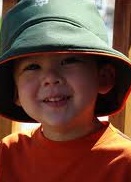
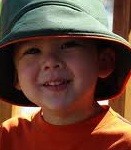
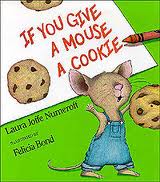
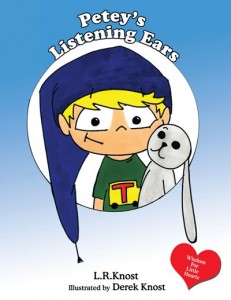
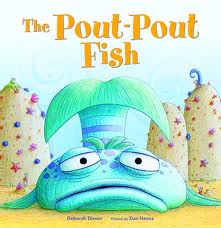
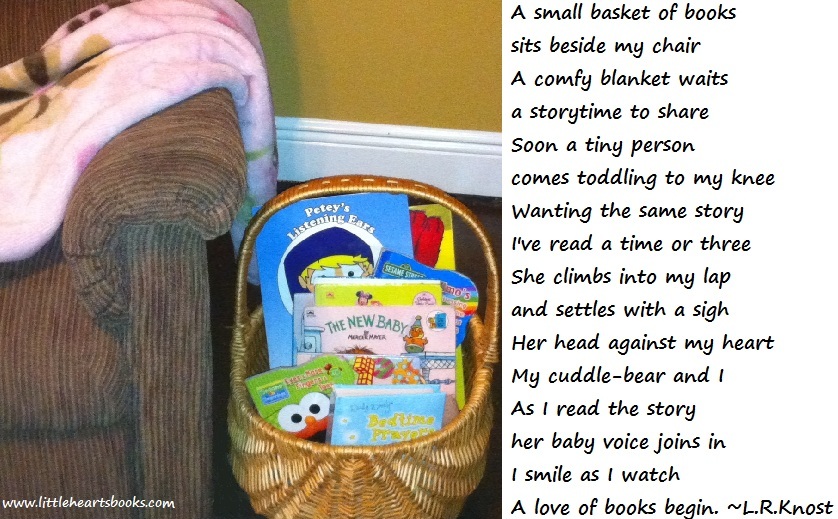
 As babies grow from the newborn stage, through infancy, and into the toddler years, there is a natural and healthy progression toward independence that blossoms when a secure trust-foundation is in place. That trust-foundation is forged through the consistent meeting of a baby’s needs lovingly, gently, and empathetically by a primary caregiver.
As babies grow from the newborn stage, through infancy, and into the toddler years, there is a natural and healthy progression toward independence that blossoms when a secure trust-foundation is in place. That trust-foundation is forged through the consistent meeting of a baby’s needs lovingly, gently, and empathetically by a primary caregiver. On a recent trip to the park, I overheard a parent ranting and raving about a little one “being a brat and always pitching fits.” It took me less than two seconds of looking at the child to realize his mother had put him down on hot asphalt without shoes on, and his ‘fit’ was actually cries of pain as he danced around trying to keep his poor little feet off the asphalt while trying to push past his mommy to get back into the car. In a few years this mother will wonder why her ten-year-old is always so sullen and silent.
On a recent trip to the park, I overheard a parent ranting and raving about a little one “being a brat and always pitching fits.” It took me less than two seconds of looking at the child to realize his mother had put him down on hot asphalt without shoes on, and his ‘fit’ was actually cries of pain as he danced around trying to keep his poor little feet off the asphalt while trying to push past his mommy to get back into the car. In a few years this mother will wonder why her ten-year-old is always so sullen and silent. world, they are trying to communicate. Crying, grunting, making eye contact, mirroring expressions, all of these things are the instinctive tools built into infants to reach out into a brand new world and make contact. They can do no more. It is entirely up to the parent to make the connection, to respond, to build those all-important ‘lines of communication’ that will be so vitally important to parents in later childhood. Communication is not something that just happens. It is not something that begins when a child becomes verbal, and it’s not a product of a child’s advancing maturity. Communication is a process, a relational building block, a result of intentional and responsive parenting.
world, they are trying to communicate. Crying, grunting, making eye contact, mirroring expressions, all of these things are the instinctive tools built into infants to reach out into a brand new world and make contact. They can do no more. It is entirely up to the parent to make the connection, to respond, to build those all-important ‘lines of communication’ that will be so vitally important to parents in later childhood. Communication is not something that just happens. It is not something that begins when a child becomes verbal, and it’s not a product of a child’s advancing maturity. Communication is a process, a relational building block, a result of intentional and responsive parenting.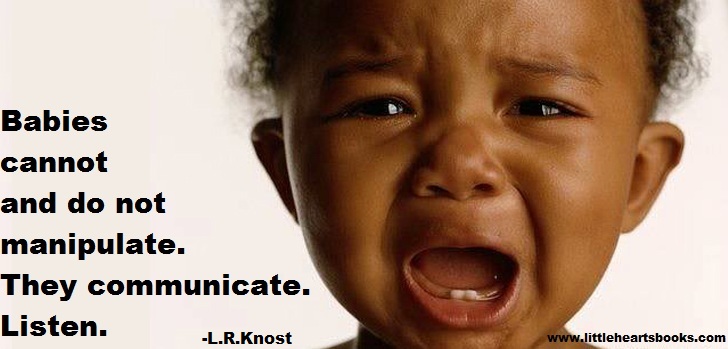 Crying is often mischaracterized as manipulation, and adults are certainly capable of using it that way. But to project such motivations on a baby is to grant them a level of skill and control far, far beyond their capabilities, and that is a potentially disastrous mistake. A parent’s perception of the motivation behind their child’s behavior is often the single most powerful determinant of the parent’s response. And the parental response or lack of response to a nonverbal child’s cries either builds or damages their communication and connection. There is no in between, no neutral.
Crying is often mischaracterized as manipulation, and adults are certainly capable of using it that way. But to project such motivations on a baby is to grant them a level of skill and control far, far beyond their capabilities, and that is a potentially disastrous mistake. A parent’s perception of the motivation behind their child’s behavior is often the single most powerful determinant of the parent’s response. And the parental response or lack of response to a nonverbal child’s cries either builds or damages their communication and connection. There is no in between, no neutral. And the responsibility for building communication and connection with your child doesn’t end when your child becomes verbal. There is a reason children aren’t classified as adults until they are, in fact, adults. They simply do not have the judgment, experience, or maturity of an adult. Parents, you are the center of your child’s world for many years, and they will model themselves after the example you set.
And the responsibility for building communication and connection with your child doesn’t end when your child becomes verbal. There is a reason children aren’t classified as adults until they are, in fact, adults. They simply do not have the judgment, experience, or maturity of an adult. Parents, you are the center of your child’s world for many years, and they will model themselves after the example you set.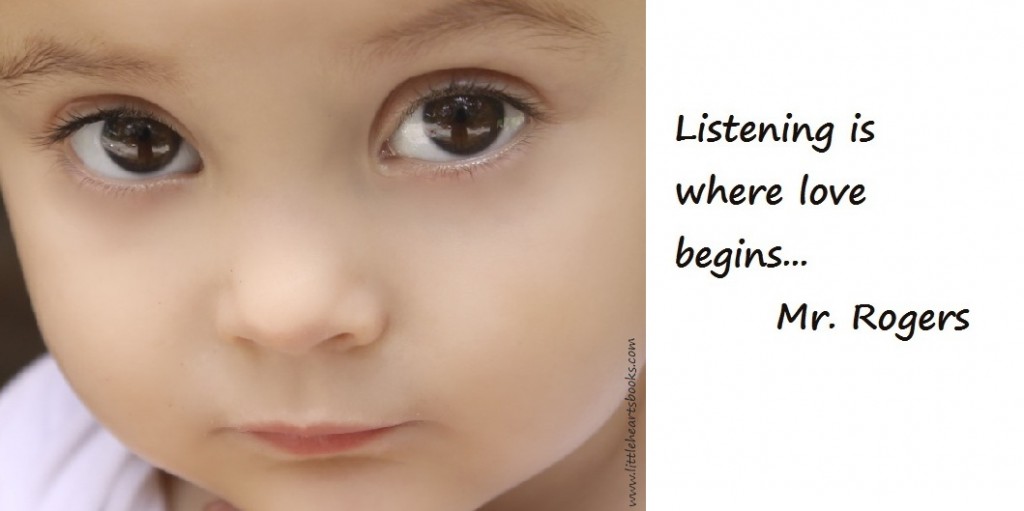
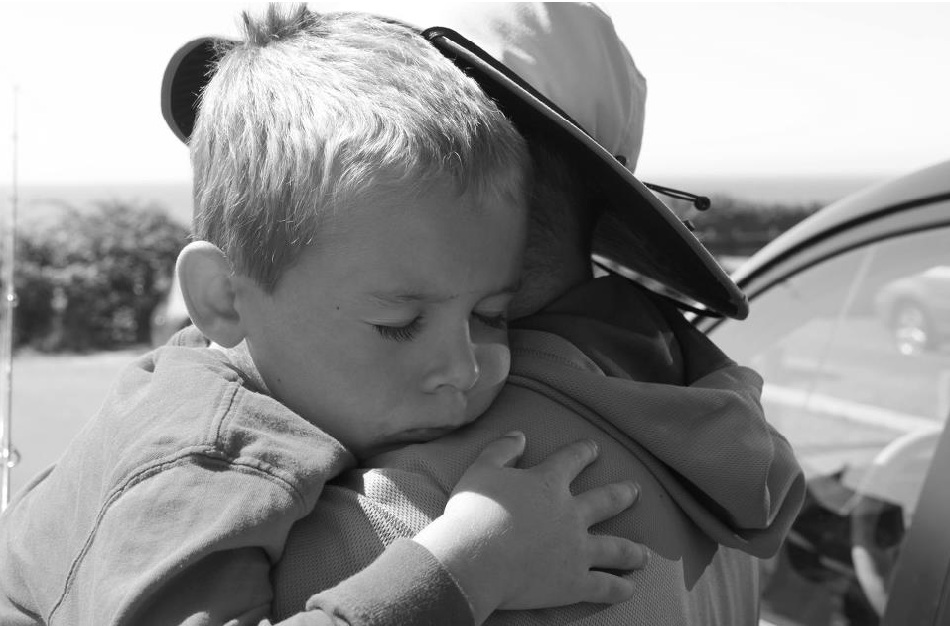
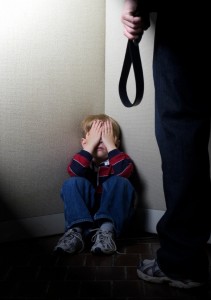 ~Hana Williams: Another child “disciplined” to death~
~Hana Williams: Another child “disciplined” to death~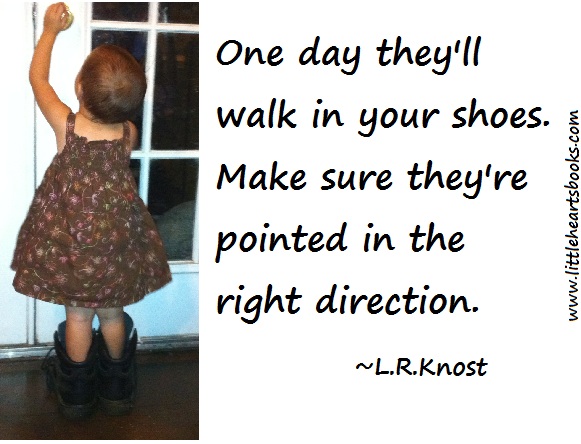 A few other amazing gentle parenting crusaders:
A few other amazing gentle parenting crusaders: When a little person feels frustrated, overwhelmed, or just plain old out-of-sorts (read: tantrum time!) it’s tempting for parents to focus on correction rather than connection. But when children are intensely stressed, the prefrontal cortex of the brain (which in early childhood is an under-developed, mushy ‘ball of playdoh’ waiting to be formed) is flooded with cortisol, aka the ‘stress hormone.’ The result is what is known as the fight-freeze-or-flight syndrome in which higher brain functions (learning, reason, self-control) are markedly hampered and lower brain functions (instinct, physical reactions) take over. This is an in-built survival mechanism that gradually comes under conscious control through years of growth in a safe and supportive environment.
When a little person feels frustrated, overwhelmed, or just plain old out-of-sorts (read: tantrum time!) it’s tempting for parents to focus on correction rather than connection. But when children are intensely stressed, the prefrontal cortex of the brain (which in early childhood is an under-developed, mushy ‘ball of playdoh’ waiting to be formed) is flooded with cortisol, aka the ‘stress hormone.’ The result is what is known as the fight-freeze-or-flight syndrome in which higher brain functions (learning, reason, self-control) are markedly hampered and lower brain functions (instinct, physical reactions) take over. This is an in-built survival mechanism that gradually comes under conscious control through years of growth in a safe and supportive environment.



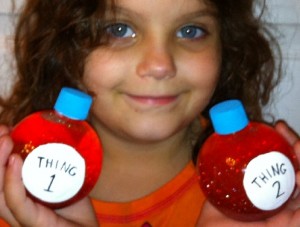
 Set aside a small corner of the family room so they can still be close to you and let them help decorate it and choose a favorite blanket, some comfy pillows, and a few special books and stuffed friends to keep there.
Set aside a small corner of the family room so they can still be close to you and let them help decorate it and choose a favorite blanket, some comfy pillows, and a few special books and stuffed friends to keep there. 









